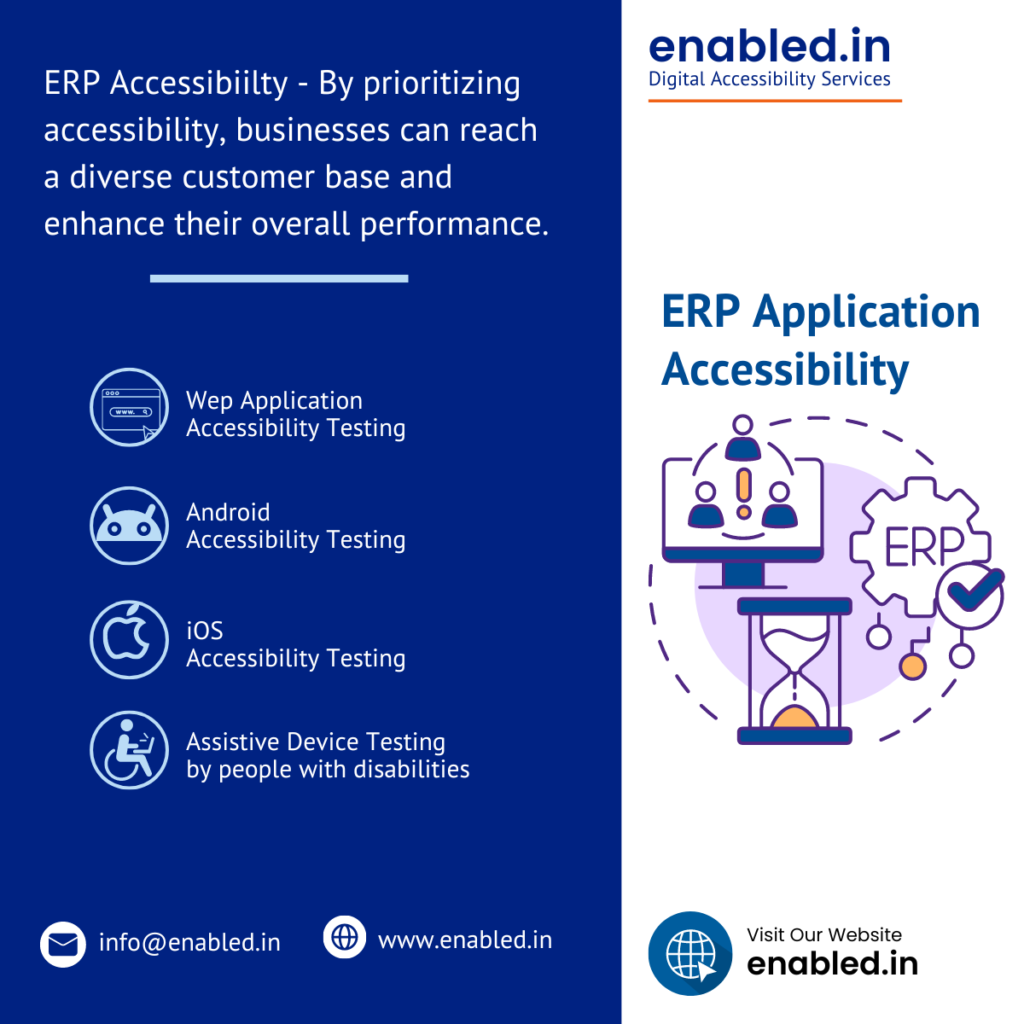Accessibility is important for everyone, not just people with disabilities
Ensuring that an Enterprise Resource Planning (ERP) system is accessible to all users involves implementing a variety of strategies to address the diverse needs and abilities of its users.

Compliance and Regulations
First, it’s essential to follow guidelines such as the Web Content Accessibility Guidelines (WCAG) and Section 508 of the Rehabilitation Act, which provide comprehensive standards for making digital content accessible.
ERP Accessibility
This means ensuring that the ERP system can be navigated using screen readers, has keyboard shortcuts for those who cannot use a mouse, and includes text alternatives for any non-text content. Additionally, the ERP should offer customizable interfaces where users can adjust settings like text size, color contrast, and language preferences to suit their individual needs.
Certainly! Enterprise Resource Planning (ERP) accessibility is crucial for several reasons:
Inclusivity and Compliance:
Why: Ensuring that ERP systems are accessible benefits all users, including those with disabilities.
How: Implementing features like screen readers, keyboard navigation, and color contrast adheres to accessibility standards (such as WCAG) and promotes inclusivity.
User Efficiency and Productivity:
Why: Accessible ERP interfaces allow users to work efficiently.
How: Clear layouts, logical navigation, and keyboard shortcuts enhance productivity.
Legal and Ethical Obligations:
Why: Many countries have laws mandating digital accessibility.
How: By complying with accessibility regulations, companies avoid legal issues and demonstrate ethical responsibility.
Positive Reputation and Customer Satisfaction:
Why: An accessible ERP system reflects positively on a company.
How: Satisfied users, including employees and customers, contribute to a better reputation.
ERP Application can be made accessible to all users as below:
- User-Friendly Interface : Ensure the Interface of your ERP Application is intuitive and easy to navigate.
- Make your ERP Application accessible via mobile devices by developing a responsive design or creating dedicated mobile application.
- Consider offering multi-language support within your ERP system. Allow users to switch between preferred languages.
- Accessibility Needs: This could include features such as text-to-speech capabilities, keyboard shortcuts, and adjustable font sizes.
- Provide comprehensive training to users on how to navigate and utilize the ERP system effectively.
- Assistive Device : Switch Access, Voice Access, Keyboard Access and Screen Reade
In summary, ERP accessibility ensures fairness, efficiency, and compliance, benefiting both users and organizations. By prioritizing accessibility, businesses can reach a diverse customer base and enhance their overall performance.